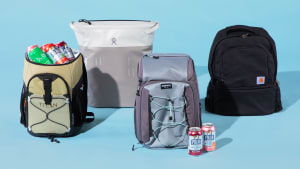Here’s why you should be using an air purifier—stat
Your home's air quality is more important than you think!
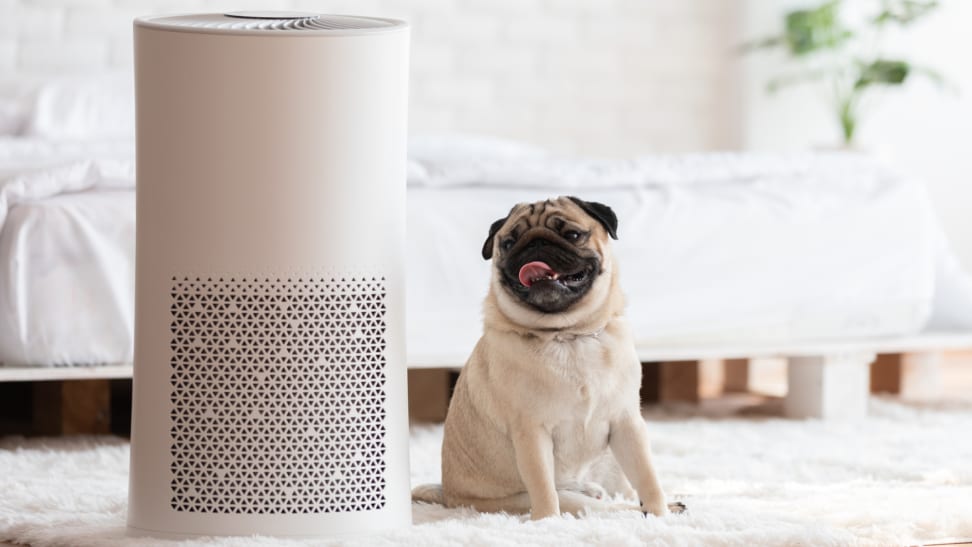 Credit:
Getty Images / Jomkwan
Credit:
Getty Images / Jomkwan
Recommendations are independently chosen by Reviewed's editors. Purchases made through the links below may earn us and our publishing partners a commission. Prices were accurate at the time this article was published but may change over time.
Air quality is a serious issue. It has made headlines over the last year as our concern for filtering contaminants like wildfire particulate matter and viruses from the air we breathe grows.
While wearing face masks to protect from the coronavirus is ever on the mind, the air quality of your home is often overlooked. Fuel-burning appliances, deteriorating insulation, newly-installed carpets, household cleaning products, and outdoor air pollution are just a few of the sources of unhealthy air quality inside, where you live, eat, and sleep.
Thankfully, air purifiers can greatly improve indoor air quality in large and small spaces.
In very basic terms, air purifiers remove particles and pollutants that can trigger allergy symptoms or lead to negative long-term health effects. There are multiple proven methods and technologies for doing so, and these can vary from brand to brand.
With the extraordinary events of the past year like widespread wildfires and the COVID-19 pandemic creating a larger interest in air quality, many homeowners and renters are buying air purifiers for the first time.
We’ve tested a number of air purifiers in our lab and spoken to experts on the efficacy of their technologies. Here’s everything you need to know about air purifiers, including the all-important question of if you should be using one in your home.
What does an air purifier do?
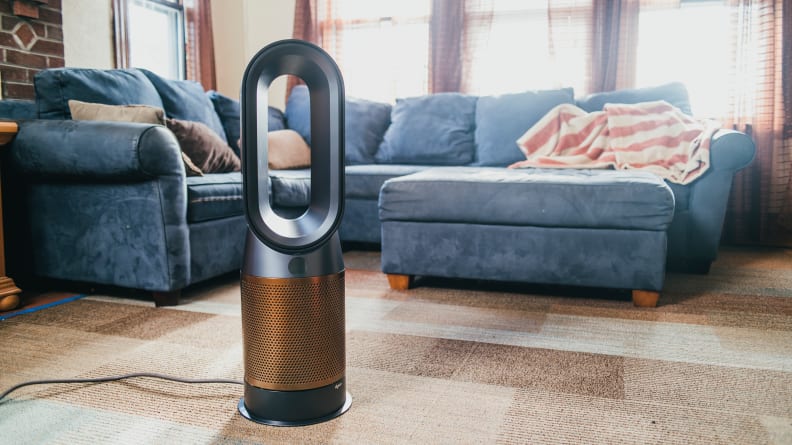
Not all air purifying technology is made the same, so it's important to know how each type of filtration system works to make the best buying decision.
Stagnant household air can become polluted by countless sources: asbestos, carbon monoxide, formaldehyde, pesticides, and lead, just to name a few. These harmful pollutants can lead to both short- and long-term health effects, ranging from mild allergy-like symptoms to respiratory diseases and cancer, when the space in which they roam doesn’t offer adequate ventilation.
Air purifiers can help to remove or reduce pollutants by using a combination of physical filters, devices, chemicals, and techniques. By doing so, air purifiers can improve the indoor air quality of your home, help soothe allergy and asthma symptoms, and get rid of toxins in the air.
How do air purifiers work?
To understand how an air purifier works, you need to understand the different types of filtration and removal technology on the market. As mentioned, air purifiers may use physical filtration processes, while others may remove particles chemically. Some use a combination of these.
Fibrous air filters
Fibrous air filters are found in some of the most popular air purifiers and work to physically filter pollutants by capturing particles via the filter fibers. A HEPA (high-efficiency particulate air filter) filter is one of the most common terms you’ll hear thrown around with air purifiers.
Found in many vacuum cleaners and air purifiers on the market, HEPA filters are a fibrous pleated air filter that theoretically removes at least 99.97% of dust, pollen, mold, bacteria, and any other airborne particle with a size of 0.3 microns or more.
Air purifiers that we’ve tested like the Wynd Home Purifier and the Blueair Classic 205 uses HEPA filters to collect particulate matter.
Electrostatic precipitators and ionizers
Electrostatic precipitators (ESPs) and ionizers both use a live wire that charges the particles coming in, and an oppositely charged electric plate collects the particles as they pass through the air purifier.
Dr. Wei-Ning Wang, associate professor of mechanical and nuclear engineering at the Virginia Commonwealth University College of Engineering, explains, “Since almost all particulate matters, including airborne pathogens, carry charges (mostly negative charges), this technique uses electrostatic interactions to attract the particles and/or use high electric current to kill the pathogens.”
Air purifiers like the Blueair Pure 211+ use an ionizer to eliminate harmful pathogens. The sleek Alen Breathesmart 75i also has an optional ionizer that’s easy to switch on.
Ultraviolet germicidal irradiation
Ultraviolet germicidal irradiation (UVGI) air purifiers use UV lamps to kill biological material like viruses, bacteria, and mold.
Wang says, “UV irradiation is a widely adopted technique to kill pathogens, which can also be incorporated into the air purifiers to further enhance the antipathogen capability.”
Sorbent media like activated carbon or silica gel
Sorbent media uses the fact that particles are attracted to certain molecules to absorb and trap certain particles. Activated carbon and silica gel are two of the more frequently used sorbent media filters.
The best smart air purifier we tested, the LG PuriCare 360-Degree Air Purifier, uses an activated carbon sorbent filter to remove odor, smog, and airborne chemicals.
Photocatalytic oxidation
Photocatalytic oxidation (PCO) uses a combination of UV lamps and sorbent media to create ions that oxidize the gas particulates and change their chemical composition until only carbon dioxide and water remain.
Plasma
Plasma air purifiers perform similarly to PCO, in that they remove pollutants by creating ionized particles that attach to these pollutants and change their chemical composition by oxidation—but they do this without a sorbent media.
It's important to be aware that plasma air purifiers may produce ozone, which is a known lung irritant.
An air purifier like the Winix 5500-2 uses a PlasmaWave function that you can turn on or off. While plasma comes with a set of potential dangers, it is certified by the California Air Resources Board, meaning that it emits safe levels of ozone.
What kind of air purifier is best for you?
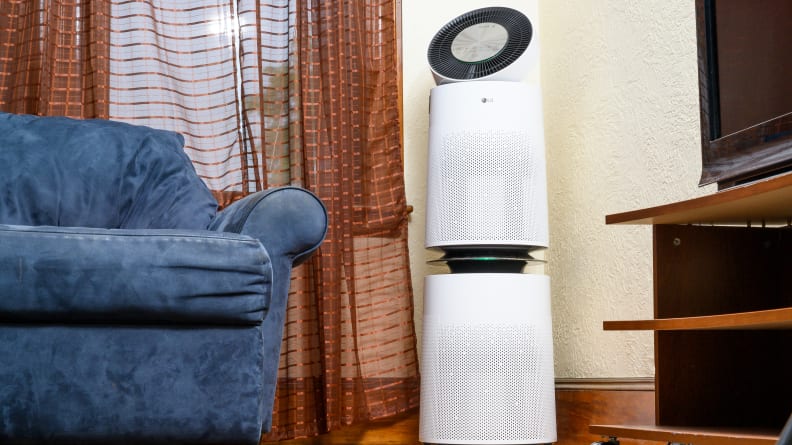
Before buying an air purifier, think about the air quality issues you want to address.
When we tested to find the best air purifiers, we looked at the effectiveness, filter capture, user-friendliness, and aesthetics of each machine. Out of these factors, the most important part of an air purifier is the filter technology.
But, don’t get caught up thinking that air purifiers that use HEPA filters are the only ones to use.
Wang explains, “Depending on the types and/or levels of air pollution, consumers could choose air filters with different capture capabilities. The American Society of Heating, Refrigerating, and Air-Conditioning Engineers (ASHRAE) has a minimum efficiency reporting value (MERV) system to evaluate the efficiency of an air filter. The higher the value, the better the capture efficiency.”
In fact, many air purifiers combine multiple technologies to provide a holistic filtration system that can combat both large particulate matter and toxic gas matter. You’ll often see air purifiers pair HEPA filters with an activated carbon filter or an ionizer for this reason. So, if you want a filter that provides better coverage against several types of pollutants, we suggest looking at purifiers that include multiple types of filtration systems.
Additionally, make sure the air purifier has the proper certifications and meets important regulations.
“Check if the purifiers meet the ASHRAE standard, Energy Star certification, and specific EPA and state regulations (e.g., California’s air cleaner regulation, AB2276),” Wang says.
Air purifiers for allergy sufferers
If your main concern is soothing allergies and their symptoms, air purifiers that use HEPA filters are a good choice.
“This is sufficient for most allergies, such as bacteria and molds, the sizes [of which] are generally in micrometer range,” Wang says. Large particles like pet hair and dander can easily be caught by HEPA filters.
Just remember that while HEPA filters can filter out a lot of pollutants like mold, dust, dust mites, and airborne bacteria, but it won’t capture particles smaller than 0.3 microns (like pollutants that come in gas form, for example).
Additionally, while HEPA and other fibrous filters capture these pollutants, they don’t destroy them—this means that regular upkeep and maintenance of your HEPA filters is key for them to function and protect properly.
Options for those concerned about toxic gases like VOCs
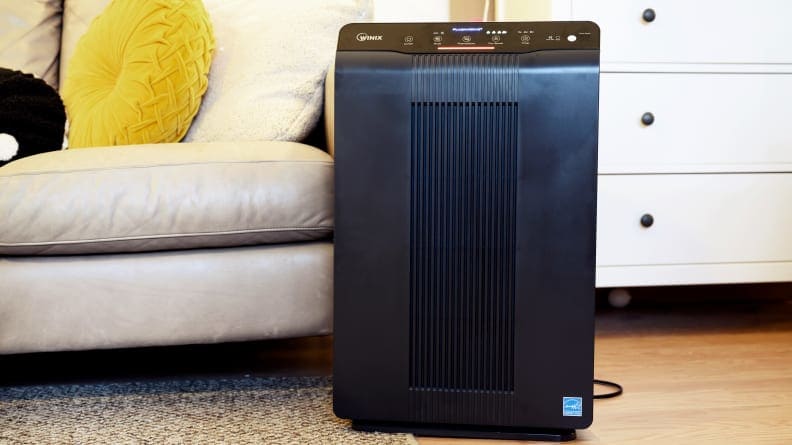
To minimize toxic gas pollutants like VOCs from affecting your indoor air quality, you'll need one with more than a HEPA filter. Look for filters, like the activated carbon filter in the Winix 5500-2, to eliminate pollutants.
This isn’t meant to alarm, but toxic gases in the home are more common than you may think. These toxic gases—most predominantly being volatile organic compounds (VOCs)—come from sources like paints, vinyl, upholstery, cooking, burning wood, and even cosmetics like nail polish.
It’s important to understand that a HEPA filter will not be able to remove VOCs and other gas pollutants.
Instead, you need to opt for an air purifier that contains sorbent media, like activated carbon.
Wang says, “The activated carbon filters can efficiently remove most VOCs through absorption thanks to their porous structure and large specific surface area. These two filters are often used together to remove particulate matters and VOCs simultaneously.”
Many brands offer combination HEPA and activated carbon filters to catch as many particles and pollutants along the spectrum as possible. Our favorite air purifier that we’ve ever tested—the Winix 5500-2—uses a HEPA filter, carbon filter, and plasma to clean the air thoroughly.
Air purifiers that can tackle viruses like the coronavirus
Although vaccines now offer a light at the end of this COVID-19 pandemic tunnel, you may still want to protect yourself beyond mask-wearing and social distancing.
Considering COVID-19 spreads much more easily in indoor environments with inadequate ventilation, many people are turning to technology that can potentially mitigate exposure.
But the question remains for many consumers: Will an air purifier help protect from COVID-19?
The EPA cautions that while air cleaners can help to reduce airborne contaminants in indoor spaces, air cleaning is not enough on its own to protect people from exposure to coronavirus.
However, when used in combination with other CDC-recommended safety measures, air filtration can be used as an extra part of the plan to reduce transmission.
Historically, we know that viruses, bacteria, and fungal spores can be removed by air purifiers, especially with UVGI air cleaning technology that kills or deactivates viral particles using UV lamps.
HEPA filters may also be able to catch and collect virus particles, too—depending on how the virus is transmitted.
“Although viruses have much smaller sizes, typically in several hundred nanometers, they are always transmitted with droplets or other carrier particles (such as dusts), whose sizes are much larger (micrometers to millimeters),” Wang says. “In this sense, HEPA filters are also effective in capturing airborne viruses.”
But, Wang cautions consumers from choosing purifiers from brands making broad claims about eliminating the virus that causes COVID-19.
“The efficacy is dependent on the technology they use and also requires extensive research data to prove,” Wang says.
“Since the pandemic is still going on and the research data in this area are still limited, it would be too early to claim that a specific air purifier has a high efficiency in killing the coronaviruses.”
Devices that can mitigate smoke and ash debris
As wildfires rage in the western U.S.—much like last summer— concerns of air quality increase for those affected by the smoke, ash, and soot that comes with the fires. Even with windows and doors shut, wildfire smoke and pollution can easily make its way into the house.
Many experts say that using an air purifier is an effective way to reduce wildfire smoke exposure inside your home.
HEPA filters are effective in filtering out any particulate matter that is larger than 0.3 microns, while active carbon filters are helpful in eliminating smoke exposure that can come with wildfire pollution.
To buy or not to buy an air purifier
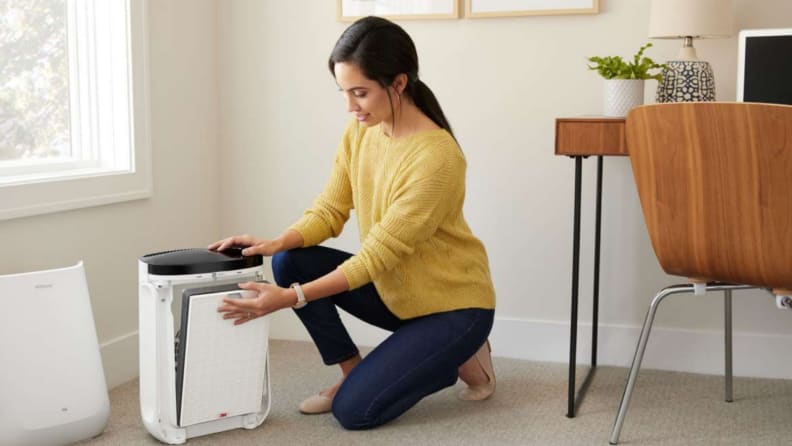
Air purifiers are proven to be effective, especially for those with respiratory or heart diseases who need to monitor the indoor air quality.
While pressing concerns like wildfire pollution and coronavirus may incline you to purchase an air purifier, there are also many everyday circumstances that create poor indoor air quality.
So, are air purifiers worth it? The short answer is yes, because they work just as they’re intended. Several studies have shown that air purifier usage can have a mild to moderate positive effect on air quality, and therefore, personal health.
For this reason, an air purifier may be the household investment to make this year. For most homeowners, the Winix 5500-2 Air Purifier is our best overall choice for its intuitive controls, ability to easily move around the house, and powerful filtration against potent fumes like cigarette smoke.





